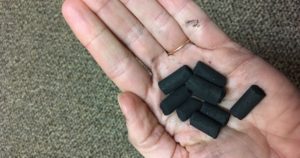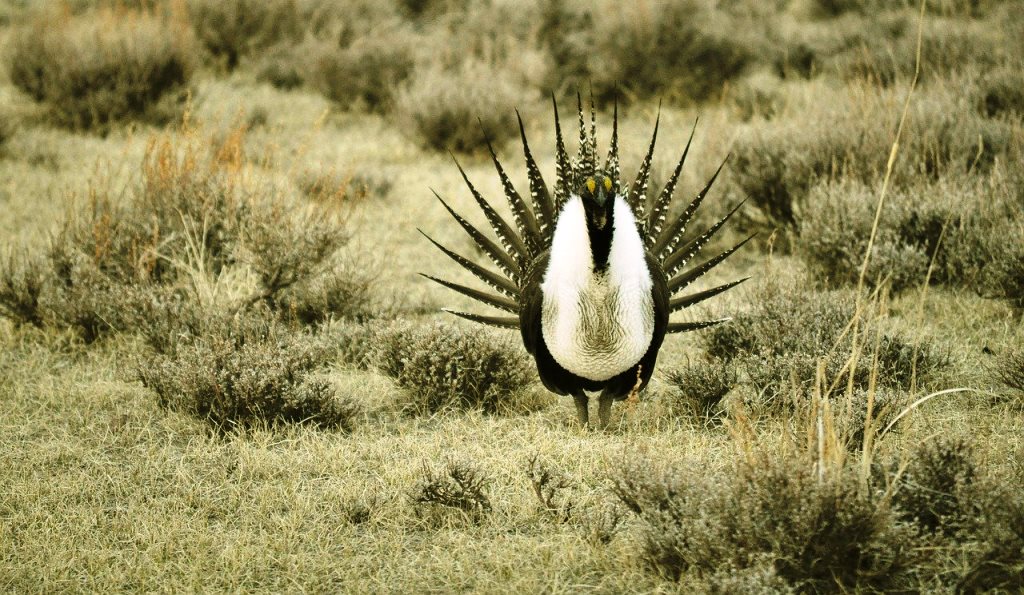Restoring sagebrush where it has disappeared isn’t as easy as just scattering seeds and waiting for them to sprout. In order to coax the iconic Wyoming plant to grow on sites where it was removed, The Nature Conservancy (TNC) is using science, ingenuity and an industrial pasta machine.
A new sagebrush seed pod lab has been established at TNC headquarters in Lander, Wyoming. The lab was built with support from the Wyoming Department of Environmental Quality and the U.S. Bureau of Land Management as part of efforts to restore sagebrush to reclaimed mine lands around the state.

Pasta machine-derived seed pods for restoring old mine sites into prime sagebrush habitat.
Photo © Maggie Eshleman/TNC
The lab is an unusual cross between a kitchen and plant nursery. The idea is to encase the seeds in a growing medium that will hold enough moisture and nutrients to give them a head start on getting established.
Lab researchers use a large mixer to blend various recipes of growing medium, or as TNC Restoration Scientist Maggie Eshleman calls it, “the seed pod dough.” The “dough” is then loaded into an industrial pasta machine which extrudes it as small pellets, called pods. Now, with the seeds safely encased in the growing medium, the pods are ready to plant.
Eshleman, along with fellow TNC scientist Corinna Riginos, must answer a number of questions before they can transfer the pods to the field.
What size pods are ideal for these minute seeds? Too much medium may make it hard for the seeds to emerge, too little may not supply enough nutrients and moisture to give them a good start. What are the essential ingredients to help sagebrush establish in places where the topsoil is gone? How many different recipes will they need to produce?
“Different recipes may be needed for different locations depending on the specific conditions on site,” explains Eshleman. “At the lab, we can test new recipes, indoors, before trying them in the field.”
The work is part of the Abandoned Mine Lands Native Plants Project (AML NP2). The multi-year project is a team effort sponsored by the BLM and WDEQ.
In addition to the seed pod research, volunteers have also planted sagebrush seedlings on sites in the Gas Hill.
No word yet on what sauce works best for the sagebrush: Neapolitan, alfredo or pesto.
Featured photo of sagebrush and sage grouse by skeeze from Pixabay.

